Pests on roses
In order for you to enjoy healthy roses, we recommend that you provide some conditions:
-
Choose varieties for your garden that are as robust as possible. We attach great importance to breeding resistant and thus low-maintenance rose varieties.
-
A suitable location and good care contribute to the health of your roses.
-
Provide a habitat for the natural enemies of animal pests by keeping some areas of your garden untidy and naturalistic.
-
Feel free to offer insect hotels and plant insect-friendly plants, such as varieties from our Bienenweide® rose assortment.
It is natural that you may also encounter fungal diseases on your plants. In this case, please follow these tips:
-
If possible, do not water your roses from above with lawn sprinklers, because fungal pathogens spread better on moist foliage.
-
Fungus-infested leaves on the ground should be picked up regularly and disposed in household trash.
-
If your tolerance level is exceeded to the point that you want to resort to chemical pesticides, please apply them as a preventive measure when the young leaves are forming. Change the active ingredients so that no resistant strains of pathogens develop.
-
Since the registrations of plant protection products often change and there are different suppliers, no products are listed here. Please ask directly at your local dealer and be sure to follow the instructions for use when applying the product.
And this is how you recognize fungal pests:
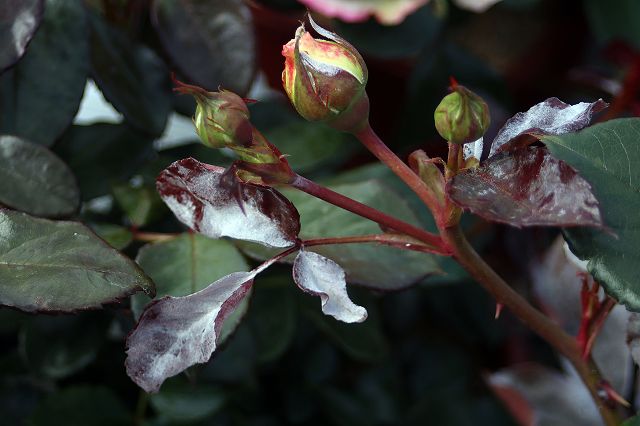
Powdery mildew forms a white coating on the upper side of young leaves and buds. Pruning is recommended.
Beware: downy mildew has a white-gray coating on the bottom of leaves and flowers and purple-brown leaf spots, which may be separated by leaf veins, on the top of leaves.
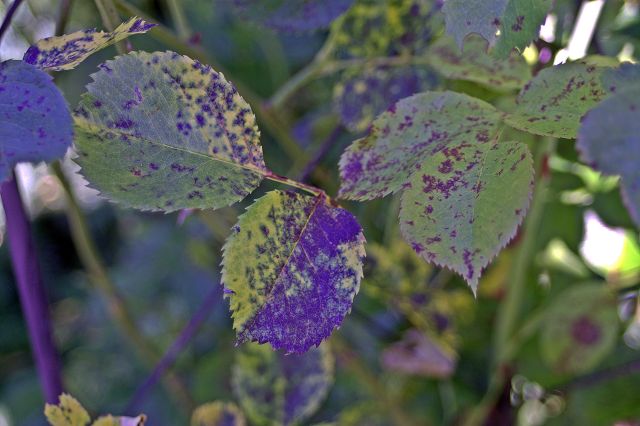
The common black mold forms brownish-black, round spots on the leaf surface, whose edges are frayed in a star shape. The leaf turns yellow and falls off.
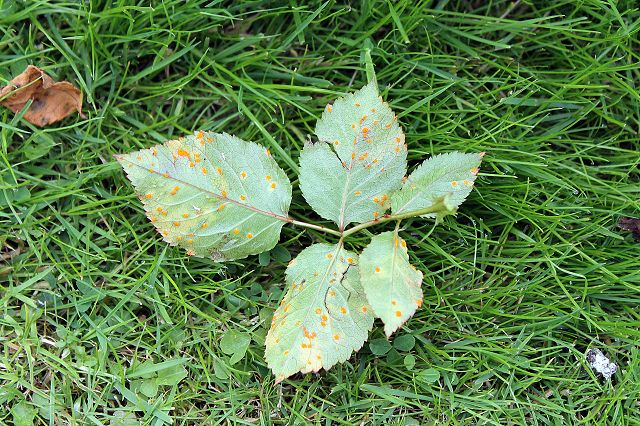
Rose rust can be recognized by small orange spots on the bottom of the leaf, they look like rust cones.
Gray mold (Botrytis) occurs preferably after prolonged rain and covers flowers, buds and young shoots with a gray fungal layer. Remedy is cutting off and destroying.
Bark blight attacks overly soft, immature shoots and forms elongated, dark spots on the bark. Countermeasures include fertilization as needed.
Animal pests:
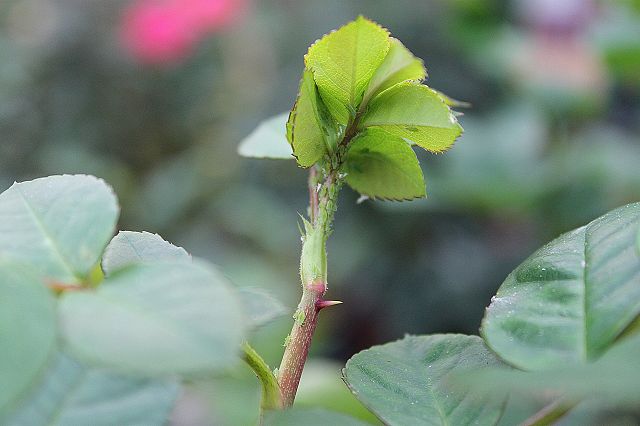
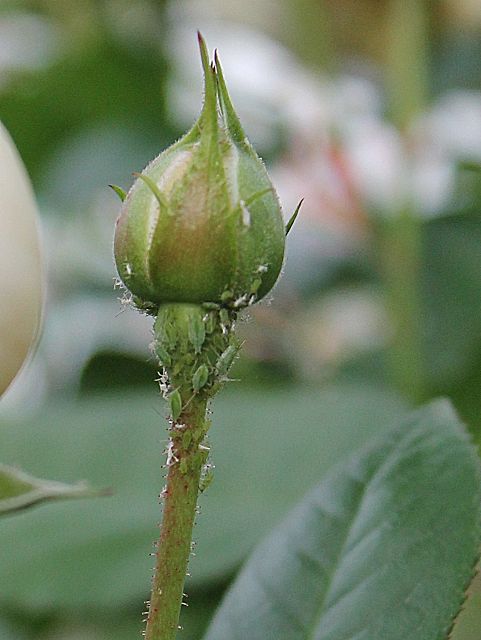
Aphids suck mainly on young shoots and buds. Spraying with a powerful stream of water is often sufficient as a countermeasure. Natural antagonists such as tits and ladybugs will soon assist you. If necessary, you can also spray leaves and buds with a green soap solution and then wash them off with clear water.
The rose shoot borer occurs (there is an upward and a downward rising one) on garden roses from June through September. Shoot ends suddenly wilt and dry up due to the pathways eaten away by larvae. As a countermeasure, the wilting, infested shoots should be cut back to the healthy wood and disposed of in the household garbage.
The rose beetle (about 1 - 2 cm in size) and the pollen beetle (about 2 - 3 mm in size), which destroy the inside of the buds, can be easily collected by hand in the morning.
You can recognize an infestation of rose cicadas (similar to aphids, white-green, hopping or flying) by the white spots on top of the leaves. If necessary, chemical pesticides will help.
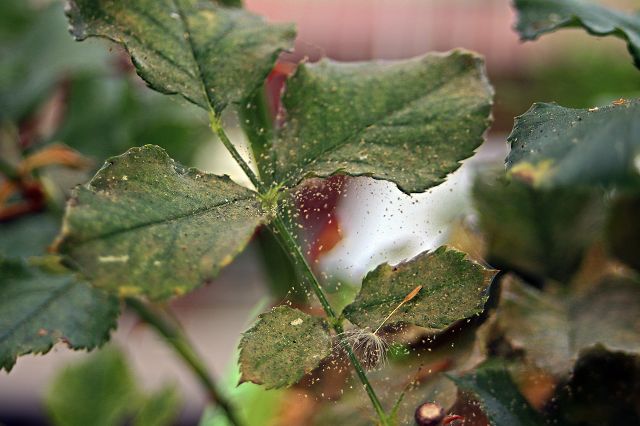
Spider mites (syn. red spider mites) damage by sucking and can be recognized by the fine webs around the flowers. It helps to wet the area, remove infested shoots and dispose them in the household garbage.
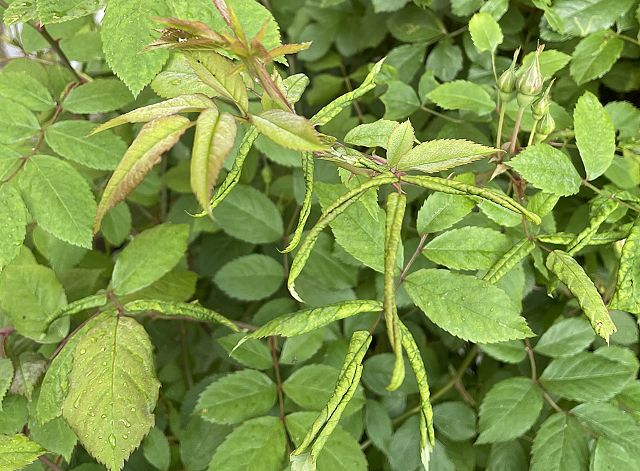
Due to the feeding damage of the white-greenish larvae of the leafroller wasp, which occur from May to July, the leaves turn yellow and curl up. The larvae, which are just under 1 cm in size, are found in these leaf rolls. As a remedy, cut off the curled leaves and destroy them.
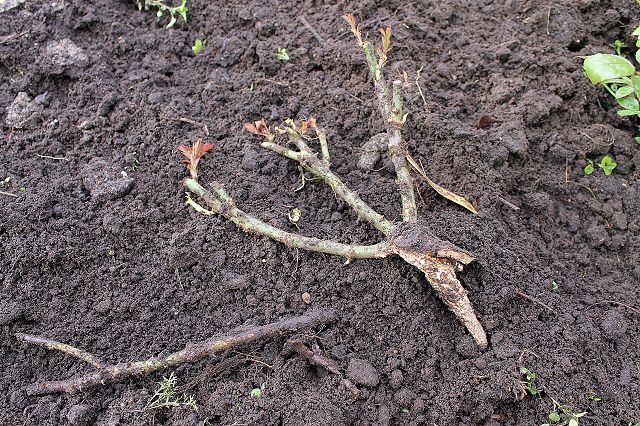
Voles like to eat the bark of rose roots. You can use box traps, please handle with gloves to avoid odor. Apple, celery or peeled carrots serve as bait. Support natural predators such as birds of prey by perching or weasels by offering wood or rock piles.
Deer also like to eat young rose shoots. They can be scared off by strands of human hair, buttermilk or, best of all, preparations available from specialist retailers.
